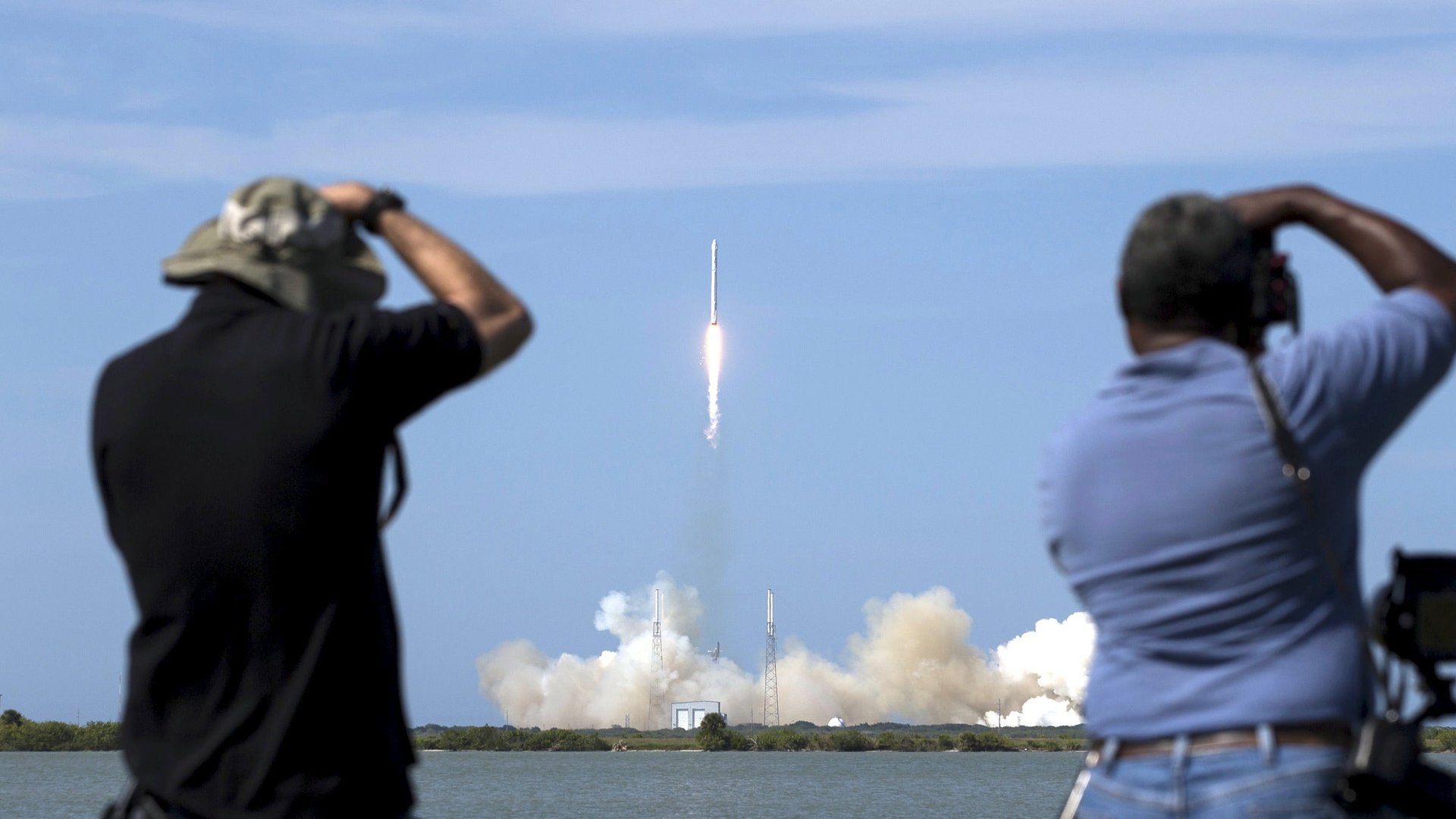Elon Musk and SpaceX are escalating the race for reusable rockets
The competition between US billionaires to develop and deploy next-generation rocket technology is about to enter a new stage.


The competition between US billionaires to develop and deploy next-generation rocket technology is about to enter a new stage.
Elon Musk’s space company, SpaceX, aims to save tens of millions of dollars per launch by developing a reusable rocket booster that lands safely instead of being discarded after launching satellites and space craft into orbit. It had hoped to prove its technology at sea before deploying it on land, where a failure could bring collateral damage, but it found that choppy waters frequently upset its maneuvers at the last minute:
Despite the failed attempts to fly the 14-story aluminum tube to a secure landing on a floating ocean platform, SpaceX sounds ready to skip to the next step. A NASA official told Florida Today that the company is planning to land its next rocket booster at Cape Canaveral, on a landing pad it leased from the government earlier this year.
SpaceX declined to comment on the report. But it’s hard not to see the accelerated timeline as a response to last week’s announcement that Blue Origin, the space company founded by Jeff Bezos, successfully landed its rocket, New Shepherd, at a Texas test site after flying it to the edge of space, 100 kilometers above the earth.
Having proven its technology, Blue Origin, which is also developing a new rocket engine in partnership with SpaceX competitor United Launch Alliance, now seems the likeliest space startup to join SpaceX in making the leap from billionaire vanity project to viable aerospace business. Lagging behind is Richard Branson’s Virgin Galactic, a space tourism hopeful that’s been plagued by development problems.
When Bezos made his Twitter debut to announce the highest flight and successful return of a booster rocket (reusable rocket ships, including Virgin Galactic’s SpaceShipOne and the Space Shuttle, have flown as high and returned) he described his used rocket as “the rarest of beasts,” which prompted both congratulations and a salty rejoinder from Musk, whose company has also succeeded in suborbital landing of a rocket stage, though not from that altitude.
Musk also pointed out that SpaceX’s Falcon 9 rocket is much larger and flies higher and faster than New Shepherd, complicating the physics of landing it safely on the ground during commercial operation. But he promised “orbital land landing next,” and apparently intends to give it a shot soon.
The challenge comes at a somewhat fraught time for his company, however. The destruction of its Falcon 9 rocket, which exploded in a June mission to the International Space Station (the company’s first failure in 19 launches), has thrown delays into its commercial launch business, costing it tens of millions in revenue. Expectations are building around the company’s return to flight, which will launch several satellites for the telecommunications company Orbcomm, as well as demonstrate the rocket’s ability to ferry satellites to geosynchronous orbit ahead of a mission for the European satellite giant SES.
While SpaceX has tested its landing technology on several previous commercial missions, doing so over land for the first time while returning to flight and demonstrating technology for a major client significantly raises the stakes of the launch, expected sometime after Dec. 15.
But Musk is nothing if not a gambler, and his space company’s troubled second half of 2015 hasn’t deterred investors, who value the company 15% higher than at the beginning of the year. Nor have the setbacks damaged the company’s relationship with NASA, which recently approved the next stage of the companies contract to bring astronauts to the ISS.